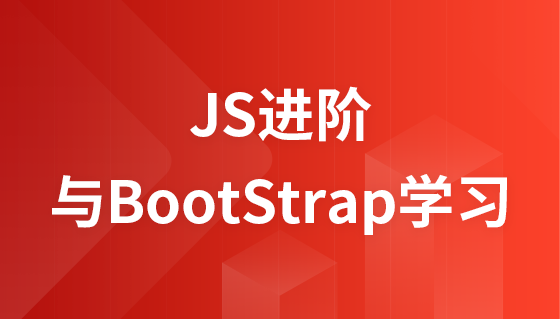
在Node.js的CommonJS模块系统中,开发者常通过删除require.cache中特定模块的条目来实现模块的热重载,这对于开发时的即时反馈或某些动态配置场景非常有用。例如:
function requireUncached(modulePath: string) {
delete require.cache[require.resolve(modulePath)];
return require(modulePath);
}然而,当项目采用ES模块(ESM)规范,并使用import语句时,这种方法不再适用。ESM的加载机制与CommonJS不同,它不直接暴露require.cache,尝试对通过import加载的模块使用require.resolve或delete require.cache会导致ERR_REQUIRE_ESM错误,因为Node.js默认不允许require()加载ES模块,反之亦然。这给需要在运行时动态加载和更新ES模块的场景带来了挑战。
随着Node.js生态系统的发展,新版本提供了更灵活的模块加载能力。从Node.js v23.x版本开始,require()函数现在能够加载ES模块。这意味着,如果你能够接受在动态加载模块时从import()切换回require(),那么传统的require.cache机制将重新变得可用。
实现原理: Node.js v23.x及更高版本对require()加载ES模块的支持,使得ES模块在被require()加载后,其引用也会被添加到require.cache中。因此,我们可以像处理CommonJS模块一样,通过delete require.cache[require.resolve(modulePath)]来清除其缓存,从而实现下一次require()时的重新加载。
示例代码:
import fs from 'fs';
import path from 'path';
// 确保在 package.json 中设置 "type": "module" 或使用 .mjs 扩展名
// 并运行于 Node.js v23.x 或更高版本
async function boot() {
const modulePath = path.resolve('./foo.ts'); // 确保路径是绝对路径
// 初始保存和加载
save(modulePath, "export const x = 20;");
let module = loadWithRequireCache(modulePath);
console.log(`Initial value: ${module.x}`); // 预期输出 20
// 更新模块内容并重新加载
save(modulePath, 'export const x = 100;');
module = loadWithRequireCache(modulePath);
console.log(`Updated value: ${module.x}`); // 预期输出 100
}
/**
* 使用 require() 加载 ES 模块并支持缓存清除
* 适用于 Node.js v23.x+
* @param modulePath 模块的绝对路径
* @returns 模块的导出对象
*/
function loadWithRequireCache(modulePath: string): any {
// 清除缓存
delete require.cache[require.resolve(modulePath)];
// 重新加载模块
return require(modulePath);
}
function save(filePath: string, code: string) {
fs.writeFileSync(filePath, code, 'utf8');
}
// 模拟 foo.ts 文件
save(path.resolve('./foo.ts'), "export const x = 0;");
boot();注意事项:
如果项目必须坚持使用import()进行动态加载,或者Node.js版本低于v23.x,那么可以通过向模块路径添加一个唯一的查询参数来绕过模块加载器的内部缓存。这种方法不是真正意义上的“清除缓存”,而是通过改变模块的URL使其看起来像一个全新的模块,从而强制加载器重新获取和解析。
实现原理: ES模块加载器会根据模块的完整URL(包括查询参数)来判断是否已经加载过该模块。通过在模块路径后附加一个每次都不同的查询参数(例如当前时间戳),可以确保每次import()调用时,模块的URL都是唯一的,从而触发加载器重新加载该模块。
示例代码:
import fs from 'fs';
import path from 'path';
// 假设在 package.json 中设置 "type": "module"
// 或使用 .mjs 扩展名
async function boot() {
const modulePath = './foo.ts'; // 相对路径在 import() 中通常可以工作
// 初始保存和加载
save(modulePath, "export const y = 30;");
let module = await loadWithDynamicImport(modulePath);
console.log(`Initial value: ${module.y}`); // 预期输出 30
// 更新模块内容并重新加载
save(modulePath, 'export const y = 150;');
module = await loadWithDynamicImport(modulePath);
console.log(`Updated value: ${module.y}`); // 预期输出 150
}
/**
* 使用动态 import() 加载 ES 模块并强制重新加载
* 通过附加唯一查询参数实现
* @param modulePath 模块路径
* @returns 模块的导出对象
*/
async function loadWithDynamicImport(modulePath: string): Promise<any> {
// 构建一个带有唯一时间戳查询参数的URL
const uniqueUrl = `${modulePath}?version=${Number(new Date())}`;
// 动态导入模块
// 注意:此处需要确保路径是 Node.js 能够解析的 URL 格式
// 对于本地文件,通常需要转换为 file:// URL
const absolutePath = path.resolve(modulePath);
const fileUrl = `file://${absolutePath}?version=${Number(new Date())}`;
return (await import(fileUrl));
}
function save(filePath: string, code: string) {
fs.writeFileSync(filePath, code, 'utf8');
}
// 模拟 foo.ts 文件
save(path.resolve('./foo.ts'), "export const y = 0;");
boot();注意事项:
在Node.js/TypeScript中实现ES模块的热重载和缓存清除,需要根据项目的具体需求和运行环境进行选择:
Node.js v23.x+环境且可接受require()加载: 如果你的Node.js版本是v23.x或更高,并且愿意将动态加载方式从import()切换为require(),那么第一种方法(利用require.cache)是直接且有效的。它提供了更接近传统CommonJS模块热重载的体验。
坚持使用import()或Node.js版本低于v23.x: 如果你必须坚持使用import(),或者运行在不支持require()加载ESM的旧版本Node.js上,那么第二种方法(动态URL参数)是可行的替代方案。它通过欺骗模块加载器来强制重新加载,但需要注意其并非真正的缓存清除,且可能带来额外的性能开销和状态管理复杂性。
无论选择哪种方法,都应充分理解其工作原理、优缺点及适用场景。在生产环境中,热重载通常用于开发阶段,或仅限于特定、受控的配置更新场景,以避免不必要的性能损耗和潜在的副作用。
以上就是如何实现Node.js/TypeScript中ES模块的热重载与缓存清除的详细内容,更多请关注php中文网其它相关文章!

每个人都需要一台速度更快、更稳定的 PC。随着时间的推移,垃圾文件、旧注册表数据和不必要的后台进程会占用资源并降低性能。幸运的是,许多工具可以让 Windows 保持平稳运行。




Copyright 2014-2025 https://www.php.cn/ All Rights Reserved | php.cn | 湘ICP备2023035733号